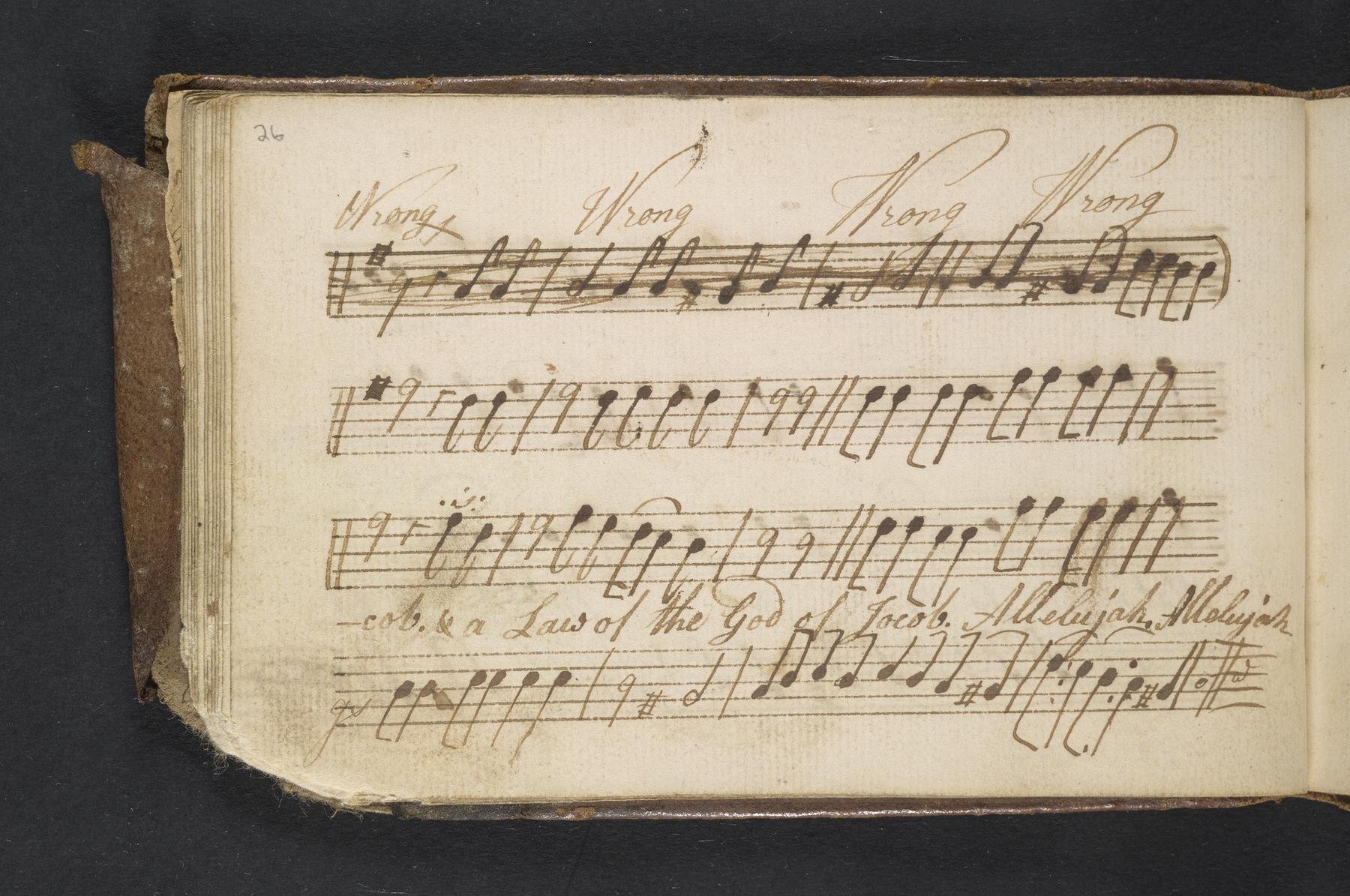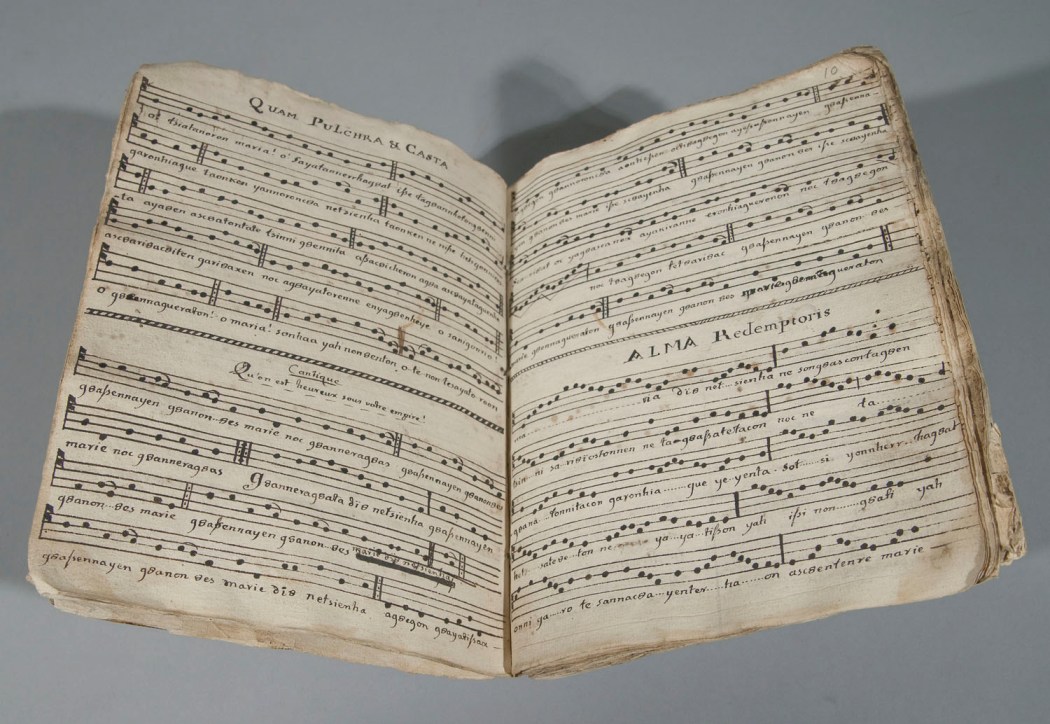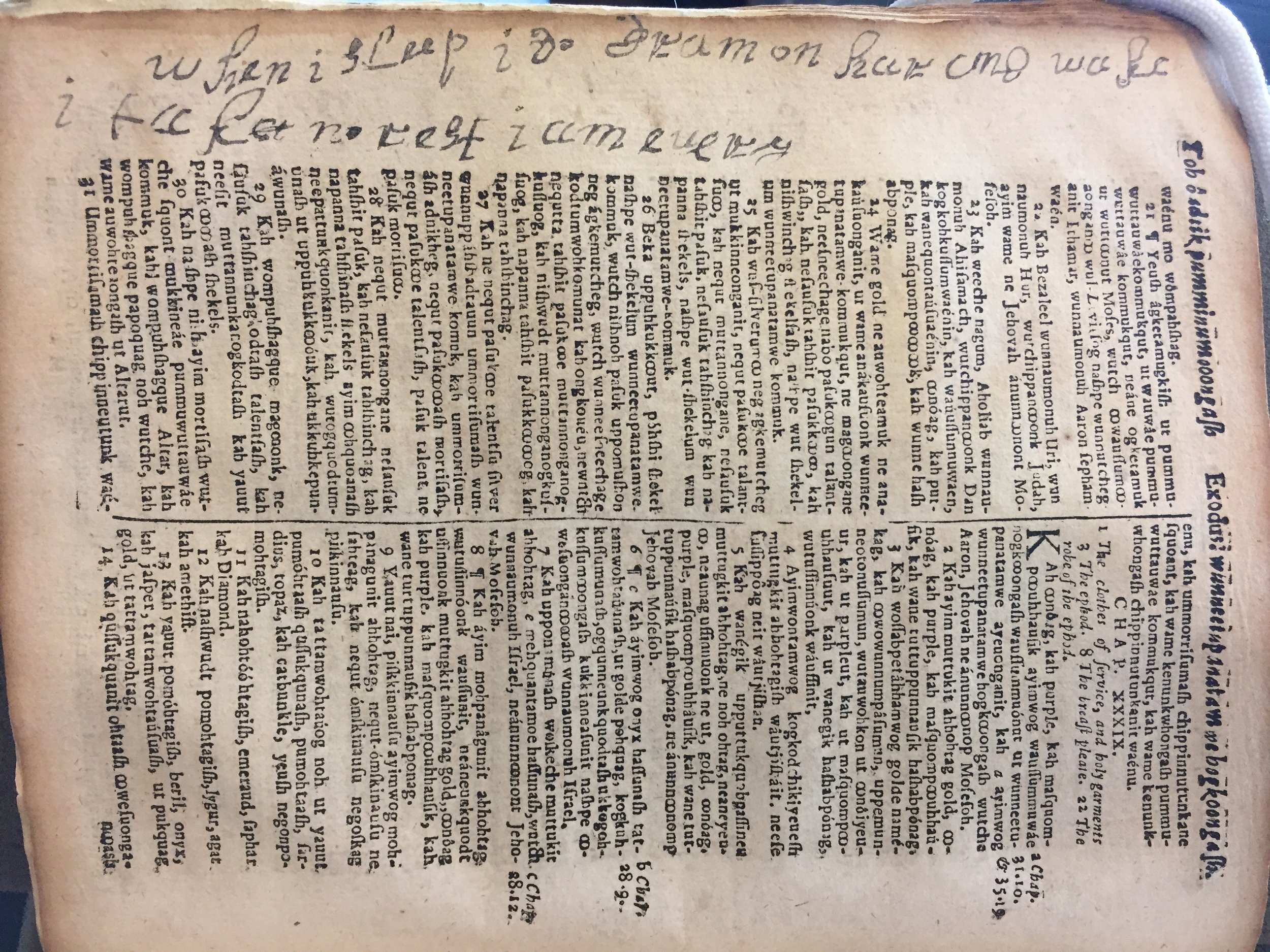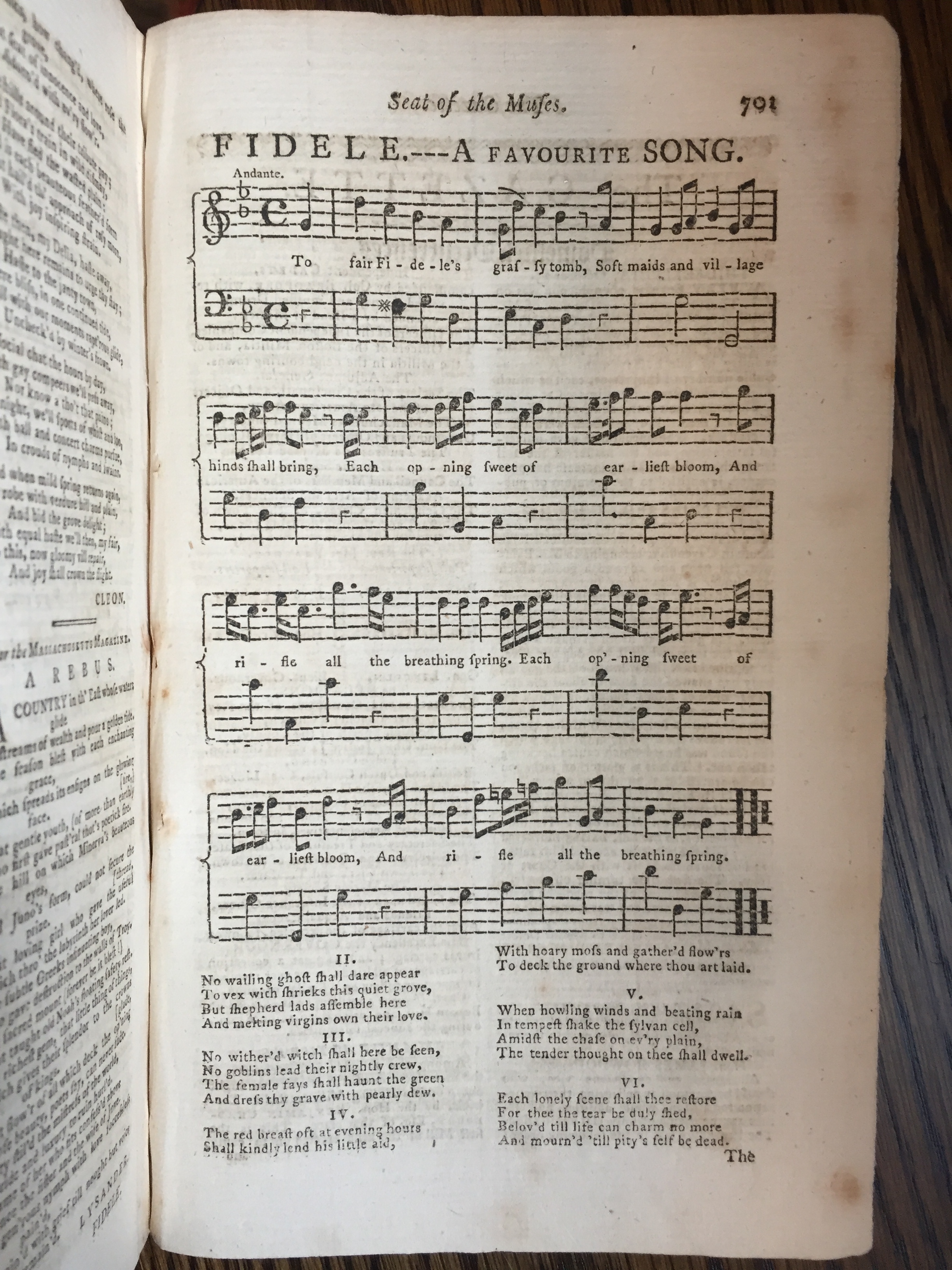

This is one of my favorite archival items - a mid-18th c. manuscript music book that shows how frustrating copying music could be (the manuscript is at the UPenn Kislak Center and has been digitized).

This is a book of hand-copied book of litanies and hymns in Mohawk created by the French Sulpician missionary François Picquet (or his secretary) c. 1750. The original is housed at the Newberry Library (VAULT Ruggles 393)

This is a copy of the 1685 Massachusett-language Bible printed in Cambridge, MA. It’s the second edition of the first Bible printed in North America, and the University of Pennsylvania special collections has this neat copy with marginalia, possibly written by a Native American in the late 17th/early 18th century. Phrases about sleeping and dreaming appear a few times in the margins.

The short-running Massachusetts Magazine included typographically-printed music, usually original compositions (which was unusual for such publications). This example comes from my personal collection.

I wrote a book! Published in the New Cultural History of Music series at Oxford University Press, this book is about white women and men who were born during the American Revolution and grew up in a new nation, and for whom making music—both performing and copying music by hand—provided a vital way to position themselves as erudite, pious, genteel, and cosmopolitan. In short, this is a book about why and how music mattered to people whose interest in music has been dismissed because they were amateurs and, largely, because they were women.






This is one of my favorite archival items - a mid-18th c. manuscript music book that shows how frustrating copying music could be (the manuscript is at the UPenn Kislak Center and has been digitized).
This is a book of hand-copied book of litanies and hymns in Mohawk created by the French Sulpician missionary François Picquet (or his secretary) c. 1750. The original is housed at the Newberry Library (VAULT Ruggles 393)
This is a copy of the 1685 Massachusett-language Bible printed in Cambridge, MA. It’s the second edition of the first Bible printed in North America, and the University of Pennsylvania special collections has this neat copy with marginalia, possibly written by a Native American in the late 17th/early 18th century. Phrases about sleeping and dreaming appear a few times in the margins.
The short-running Massachusetts Magazine included typographically-printed music, usually original compositions (which was unusual for such publications). This example comes from my personal collection.
I wrote a book! Published in the New Cultural History of Music series at Oxford University Press, this book is about white women and men who were born during the American Revolution and grew up in a new nation, and for whom making music—both performing and copying music by hand—provided a vital way to position themselves as erudite, pious, genteel, and cosmopolitan. In short, this is a book about why and how music mattered to people whose interest in music has been dismissed because they were amateurs and, largely, because they were women.